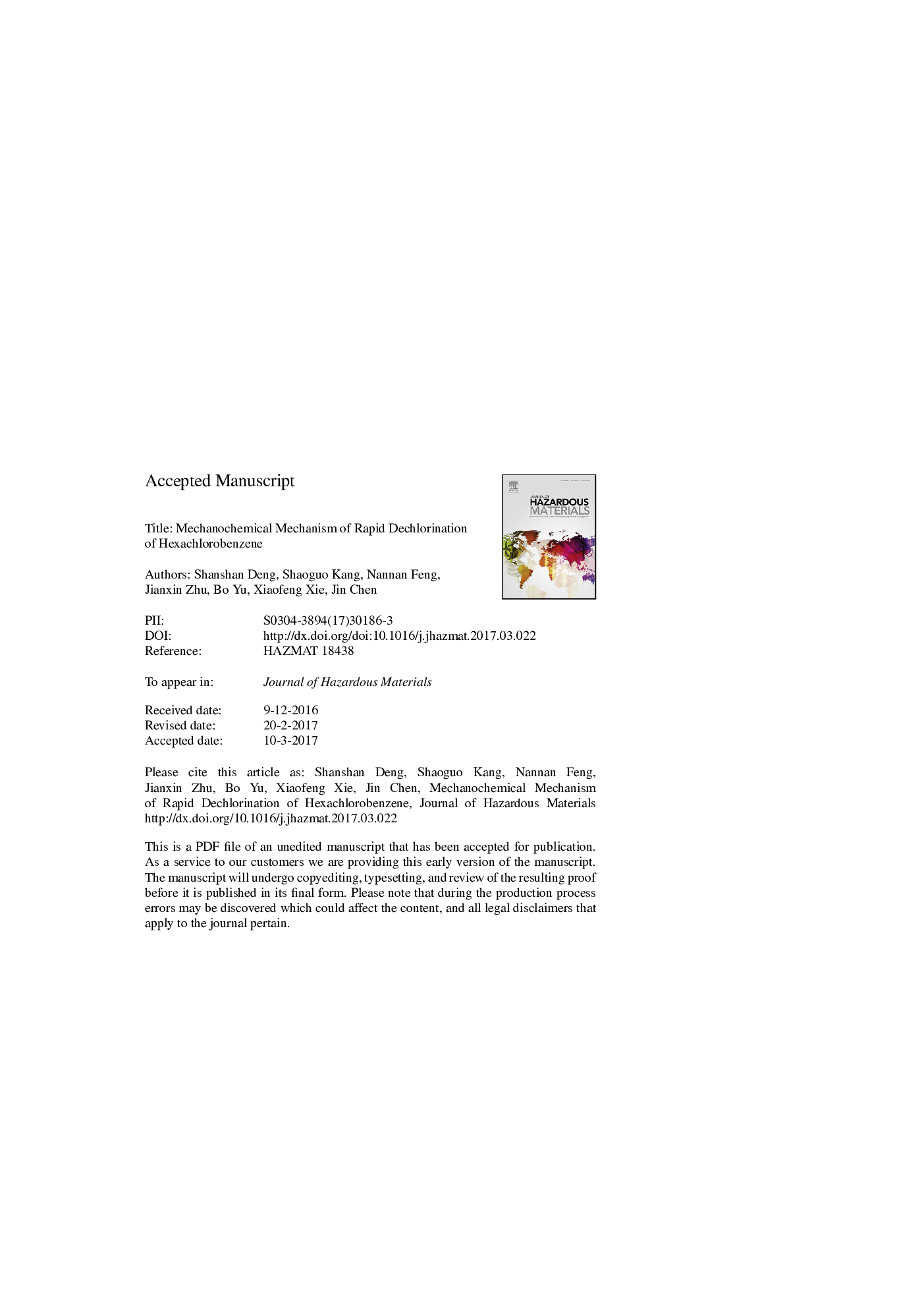| Article ID | Journal | Published Year | Pages | File Type |
|---|---|---|---|---|
| 4979437 | Journal of Hazardous Materials | 2017 | 38 Pages |
Abstract
Recent researches indicate that mechanochemical treatment (MCT) is a promising method to degrade the environmental hazards, especially in the area of persistent organic pollutants (POPs) disposal. However, the mechanochemical dechlorination mechanism of POPs still needs to be further verified. In this mechanochemical process, hexachlorobenzene (HCB) was chosen as a model pollutant with aluminum and alumina (Al + Al2O3) powders as the co-milling regents. Both of the intermediate analysis and quantum chemical calculations were adopted to elucidate the free radical dechlorination mechanism of HCB. The solid residues were characterized by electron spin-resonance (ESR) spectroscopy, Fourier transform infrared (FTIR) spectra and X-ray photoelectron (XPS) spectra, which proposed that the radicals formed in the mechanochemical process were chlorinated phenoxyl radicals (CB-O). Four quantum chemical descriptors were selected in predicting the intermediates and reaction pathway: (i) atomic charge, (ii) electrostatic potential (ESP), (iii) frontier molecular orbitals (FMO) theory and (iv) dual descriptor. Then, a stepwise dechlorination mechanism based on CB-O was proposed. It was found that the intermediates and radical-related reactions in the mechanochemical dechlorination of HCB are quite different from that happen in a typical photocatalytic dechlorination process. Impacts of different radical reactions on the dechlorination of HCB were also compared at last.
Keywords
Related Topics
Physical Sciences and Engineering
Chemical Engineering
Chemical Health and Safety
Authors
Shanshan Deng, Shaoguo Kang, Nannan Feng, Jianxin Zhu, Bo Yu, Xiaofeng Xie, Jing Chen,
